History and Culture Facilities
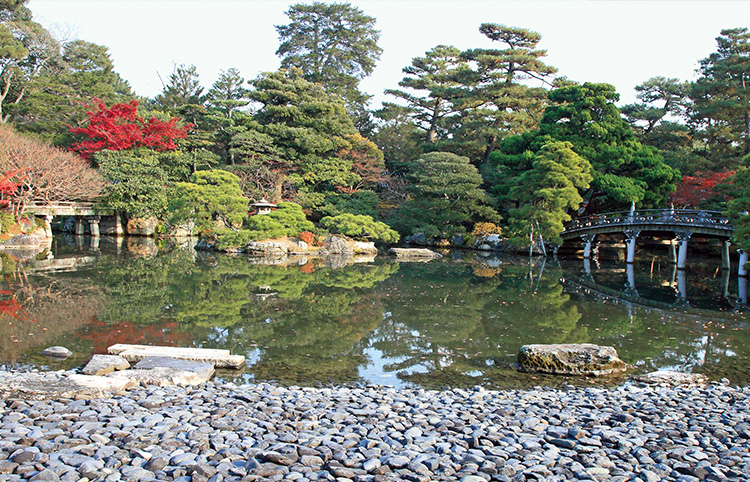
Kyoto Imperial Palace
Kyoto Imperial Palace was where emperors actually resided for approximately five centuries until 1869. Constructed in 1855, the current structure is a historic building that preserves the form of the Heian imperial palace. Kyoto Imperial Palace is open year-round and does not require advance reservations.
Open: Year-round (except for Mondays, New Year’s holidays, and other holidays)
Hours: Varies by season
*For more information, please visit the Imperial Household Agency website.
https://sankan.kunaicho.go.jp/guide/kyoto.html
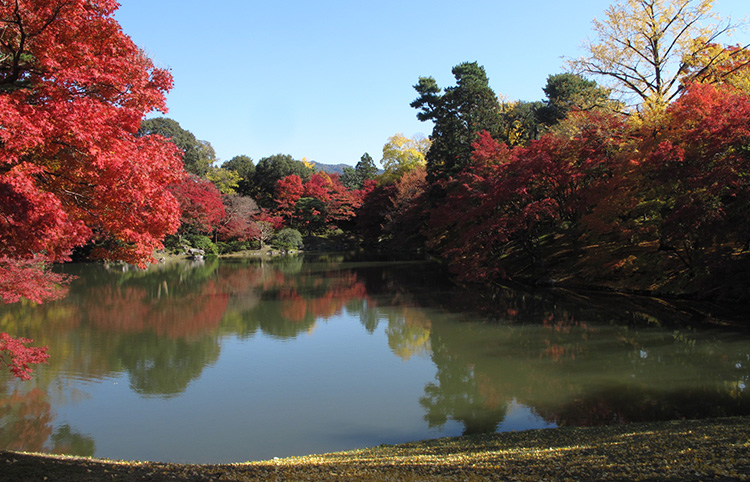
Kyoto Omiya Imperial Palace & Kyoto Sento Imperial Palace
Kyoto Sento Imperial Palace was built at the beginning of the seventeenth century as a palace for Emperor Go-Mizunoo (1596–1680) who abdicated from the throne. The residence was burned down but the garden and tea house survive and are open to visitors. Advance reservations are required for visiting Kyoto Sento Imperial Palace.
Open: Year-round (except for Mondays, New Year’s holidays, and other holidays)
Hours: Advance reservations required. Same day visits possible subject to opening.
*For more information, please visit the Imperial Household Agency website.
https://sankan.kunaicho.go.jp/guide/sento.html
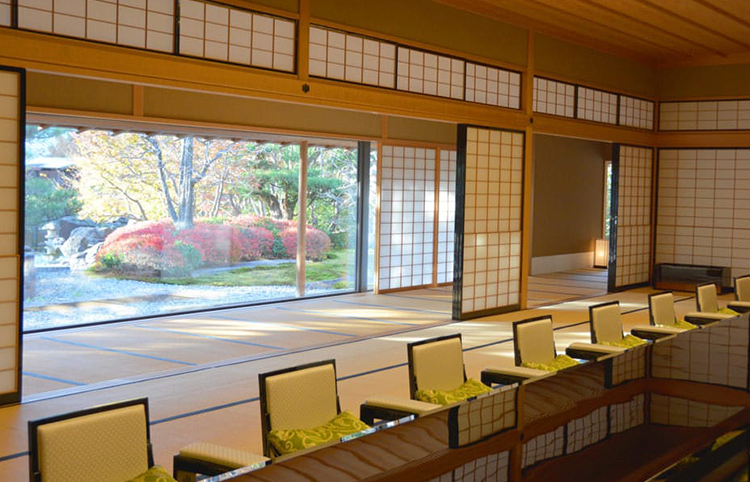
Kyoto State Guest House
The state guest house was constructed in Kyoto in 2005 for welcoming distinguished guests from all over the world. A Japanese style ambience is rendered with traditional craftmanship skills iconic to Kyoto, including carpentry, plastering, garden making, and lacquer work. Located in Kyoto Gyoen, Kyoto State Guest House offers a tranquil oasis in the heart of Kyoto. Guided tours take visitors through facilities that are actually in use.
Open: Varies by month
Hours: 10:00 a.m.–5:00 p.m.
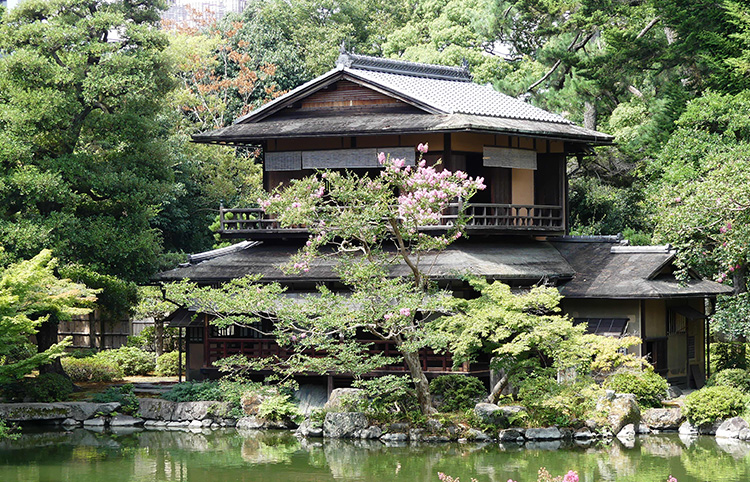
Shusui-tei Tea Ceremony House (Remnant of the Kujo Residence)
Shusui-tei Tea House is said to have been constructed some 200 years ago during the late Edo period (1603–1867). It belonged to the Kujo family, one of the five regent houses. This two-story structure still preserves the space where tea ceremonies, poetry readings, and other social gatherings were held. The tea house can be visited for a fee and also rented out for private tea ceremonies and other events.
Open to the public: Year-round (except for Sundays to Wednesdays, New Year’s holidays, and other holidays)
Hours: 9:30 a.m.–3:30 p.m.
Admission: ¥300
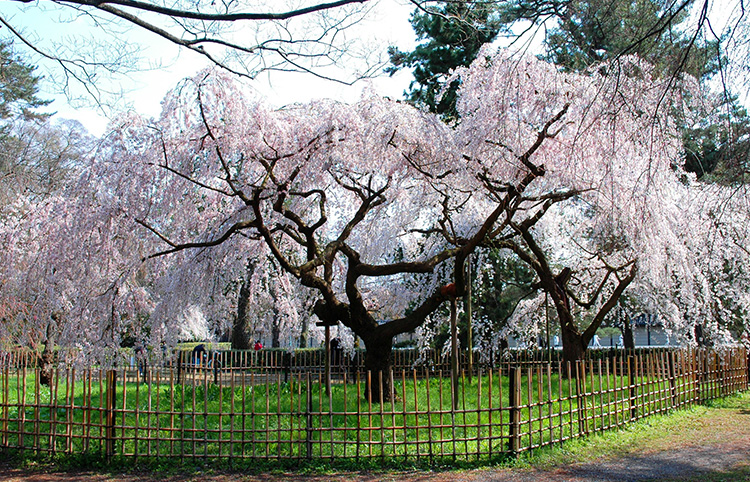
Garden at the site of the Konoe Residence
Vestiges of the former garden remain at the site of the residence of the Konoe family, one of the five houses whose family members served as regents or chancellors. The garden is said to have been created between the Azuchi-Momoyama period (1568–1603) and the early Edo period (1603-1867). The Kyoto Gyoen Garden—Preservation Project preserved the existing pond fountain, which is said to highly likely retain its original shape. The garden is popular for the “weeping cherry tree at Site of the Konoe Residence.”
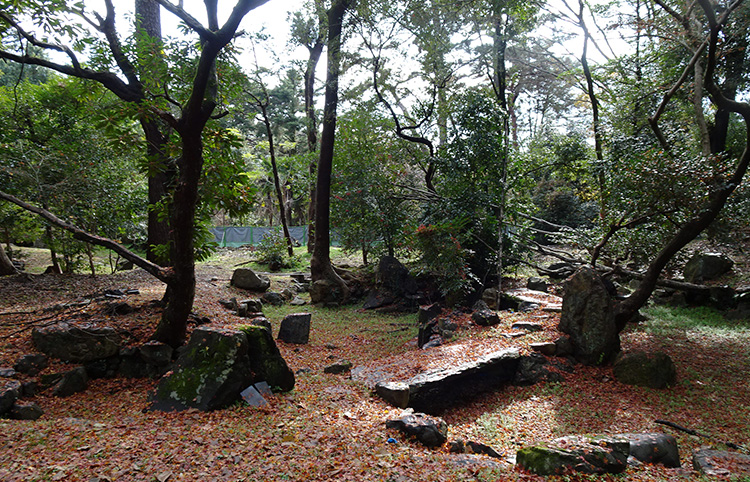
Garden at the site of the Katsura no Miya Residence
This was the site of the residence of the Katsura no Miya family, one of the imperial houses of hereditary princes that was established during the late Azuchi-Momoyama period (1568–1603). The garden is one of the few remaining vestiges of an imperial family garden. Parts of the residence were moved to the Honmaru area within the inner moat of Nijo-jo Castle. Sections of the residence are still standing, such as Otsune-goten where the occupants stayed, the Goshoin rooms for receiving visitors, the Daidokoro kitchen, and the Kari-no-ma sitting room.


